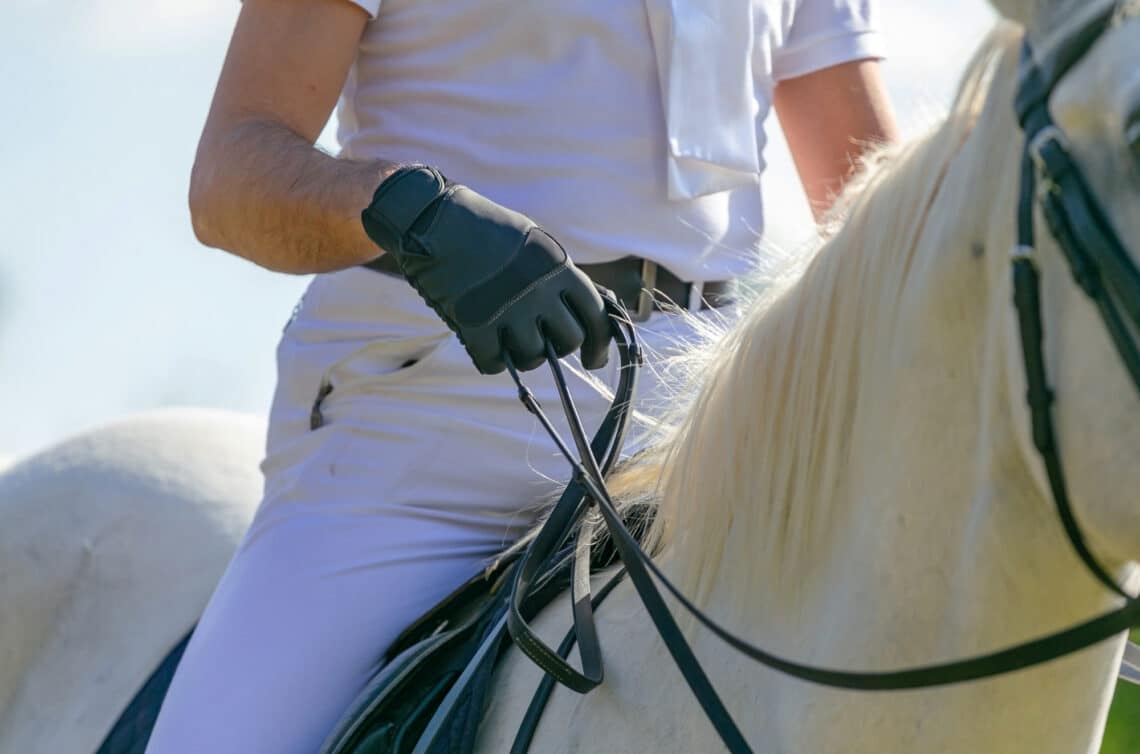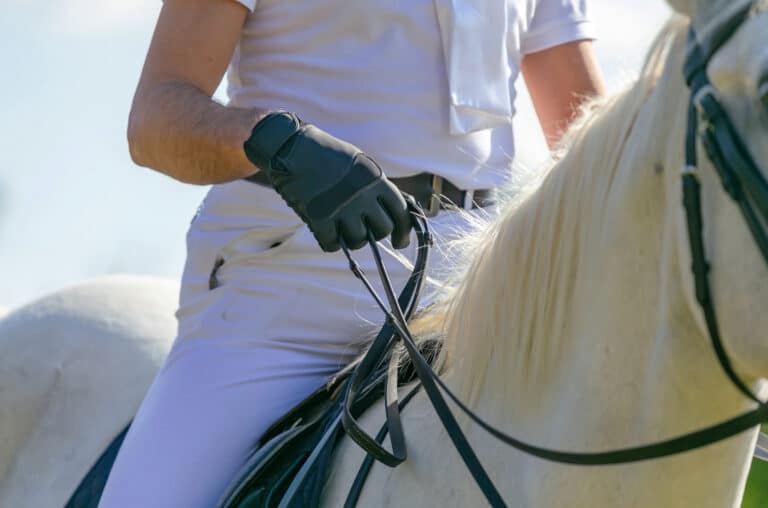
Clear lines of communication
The reins represent a line of communication between you and your horse, but what exactly are you communicating? CHARLIE BRISTER explains.
What response do we want from our horse when we put pressure on the reins? Although there are many who will tell you not to pull the reins, we all do it – and when we do it, what is it that we want to happen? To avoid confusion, it’s worth mentioning here that this article relates mainly to a young or green horse, rather than to one who is better educated and has a greater depth of understanding.
In response to pressure on both reins, a horse will quite often either throw their head up, or conversely put their head down, tuck their nose in a bit too much, and keep going at the same speed. Or, they might slow down with their head out – but sometimes they’ll slow down with a soft jaw and a soft connection. So obviously, we’re looking for that last option. We want the horse to slow down and to also be soft and responsive. How do we achieve that?
Riders often put too much focus on getting softness and lowering of the poll from bit pressure. But in so doing, we confuse the horse. Does pressure on both reins mean we want them to lower their head, or does it mean we want them to slow down? By giving them mixed signals, we’re taking away the effectiveness of the reins as a stop aid.
Quite often we hear about using the seat, but that is not nearly as effective as using the reins, particularly with young or green horses. The reins give us a very easy way to communicate to the horse that we want them to stop, or to slow down, or turn. Within that, we can both shorten and slow the stride, but that’s something to focus on later in the horse’s training. In the beginning, what we want is a slowing of their legs when we apply equal pressure to both reins.

Some of you might be thinking yes, but we want the horse to come back and not slow down. And of course, you want the horse to stay active and keep their RPM up. But actually, to come from canter to trot they do need to slow down a little bit, and it’s important for us to make that distinction and to understand it.
If we focus on head lowering from the rein aid, we really can’t expect the horse to know whether we want them to lower their poll or slow their legs. So, certainly at the beginning of your horse’s education, there must be only one answer for one aid – and we have to make it very clear to the horse what each aid means. If we give one aid that has two possible answers, then there’s maybe a 50 per cent chance of the horse giving the right answer. The result? Confused horse, frustrated rider!
Eventually, once the horse is well schooled, we can ask for slowing down with the head lowered and with softness in the jaw. But in the beginning, you should concentrate only on slowing down the legs, and work on the rest later as they become more advanced.
So, to achieve this we need to focus on applying clear pressure and release of the aids. With simple pressure on both reins we ask the horse to slow down, and when they do, we release the pressure. Yes, the horse may put its head up a little bit, but at this stage of their training, what their legs are doing is much more important than what their head is doing.
If you ask for a downward transition and the horse puts their head up, there are many different things that could be the cause. They might be distracted, or sore in the back, or in the wrong bit, or simply have not understood what it is you’re asking of them. However, assuming that none of the above are a problem, and that it’s actually due to a misunderstanding, or a lack of understanding as to what the bit pressure means, how should we proceed?
Let’s say we want to go from canter to trot; we squeeze gently on the reins, and the horse puts their head up and doesn’t slow down. So now we need to increase the pressure on the reins slightly, and if we still don’t get the right answer, we might then need to ride on a circle to help the horse understand that they’re being asked to slow down.
But if the horse responds to the bit pressure and comes back to trot yet has their head in the air, with a young horse, or a green horse, or a horse struggling with slowing down, you must release the pressure to reward the horse for giving the right answer. The priority is to reward the horse for slowing down. You can work on their outline – their shoulders, the bend, and getting lower in the poll – later, but don’t try to do it all in one movement.
This is really important. You see so many horses in dressage, show jumping and cross country who don’t slow down very easily. And why is that? Because we’re not focusing on it enough in our training. Instead, we concentrate too much on the frame and confuse the horse to the point where they don’t know that they should be slowing down in response to pressure from the bit. But by focusing on bit pressure as an aid to slowing down, you get a more relaxed horse who is much easier to get into that frame we’re all obsessed about.
So, imagine you’re in a dressage test. You’re doing a medium canter down the long side and then you have to collect the canter, but you don’t want the horse to change their frame, you want them to stay in the same frame. Once you’ve taught the horse to be in the right frame, you don’t then want the bit pressure to mean they should lower their head, you want it to mean slow down, shorten, come back to me, or half halt.
Quite often riders will say they don’t want to use the rein for fear of slowing the hind leg down, but you actually have to slow or shorten the stride a little when you’re doing a downward transition. Then there are riders who keep pulling or holding on, instead of asking for the transition or the rebalance, and then releasing the pressure to allow the horse to keep travelling.
Once you’ve taught your horse that pressure on the bit means slow down, they’re less likely to rush; it’s easier for them to stay at a consistent tempo and to maintain self-carriage. All of which makes it so much easier for you to work on their straightness, to move them off the inside leg, get them to bend, be able to reposition the shoulders and hind legs – in other words, to create suppleness and softness throughout the whole body.
We need to teach our young or green horses that pressure on the reins means they should slow down or stop.

And once a rider has improved the stop response, they generally feel more confident in going faster on their horses. A lot of problems in riding are actually, because people don’t ride their horses forward enough; they’re in an arena, they’re a bit nervous, their amygdala is busy sending warning signals to their brain, and the message is clear – what if they go faster and can’t stop? So, working on the stop response helps build confidence, and by making the aid clearer to the horse, they’ll be happier and more relaxed.
It makes many situations a lot safer as well. For example, you’re galloping on cross country, and you’re approaching a big jump when you realise your distance is not correct. You’re going to be a bit too deep and you need to slow down a little. But when you apply pressure to the bit, instead of slowing their stride, your horse lowers their head. Now you’re heading too fast towards a big, scary cross country fence and your horse has their head down. That’s obviously a very dangerous situation which has come about because your horse has learned that there are two possible answers to one aid – and in that moment they’ve chosen the wrong answer.
There can be two or more aids for one answer, but you should avoid having one aid for multiple answers.
Charlie Brister of Brister Equestrian is an all-round horseman with expertise in retraining problem horses and coaching riders in all disciplines. You can follow him on Instagram.



